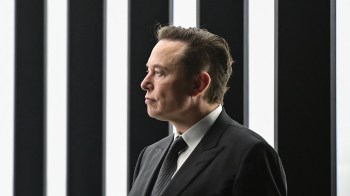Elon Musk, Tesla plan ‘Gigafactory’ site
Nevada, New Mexico, Texas, or Arizona? There can be only one home for the Gigafactory.
Or possibly two… if two are built.
The Gigafactory is a massive battery plant, built by the electric car maker Tesla, that will take up to 1,000 acres and will include its own on-site wind and solar energy plants. Tesla has narrowed down its choice of location to four states, but rather than pick one now, it will prepare to build in two or three (or potentially all four), CEO Elon Musk announced on Wednesday.
Replicating engineering work, design work, site selection, connection to power and utilities, and permitting is a costly strategy, says Ben Kallo, senior equity analyst with Robert W. Baird.
“You can talk about millions and even tens of millions [of dollars] to do this” for just one extra site, according to Kallo.
But the cost of not doing it could be much greater. Tesla plans to have 500,000 electric cars on the road by 2020. This would include more of its Model S sedans, a new SUV, and a more affordable car (at $35,000, it might be described as ‘less unaffordable’). Tesla also plans to expand into electricity storage to the wind and solar industries, says Kallo. And the gigafactory is the foundation of that plan. A delay could damage Tesla’s competitive advantage as a first mover, and could damage investor confidence. Aside from its own share holders, Tesla needs investors to finance the $5 billion behemoth project.
Jakki Mohr teaches marketing at the University of Montana and has followed Tesla closely. She says having multiple possibilities to site the gigafactory is a savvy negotiating move.
“States give huge incentives to get this kind of business in their regions,” says Mohr, and this is a way of “playing one state against another to receive better incentives to locate there.”
There’s also one critical but underappreciated concession Tesla wants, according to Charles Hill, professor of management at the University of Washington’s Foster School of Business. Tesla wants to sell cars itself, not through dealerships.
“It may be that Tesla picks a state that’s initially hostile to that – Texas would be an example – as a way of getting leverage for them to change that policy as well,” says Hill.
“The political issue around whether Tesla should have a direct sales model as opposed to selling through dealers is almost as big of an issue as the battery plant, and I don’t think the two are totally separable.”
The more back up plans you have, the more arms you can twist.
There’s a lot happening in the world. Through it all, Marketplace is here for you.
You rely on Marketplace to break down the world’s events and tell you how it affects you in a fact-based, approachable way. We rely on your financial support to keep making that possible.
Your donation today powers the independent journalism that you rely on. For just $5/month, you can help sustain Marketplace so we can keep reporting on the things that matter to you.


















